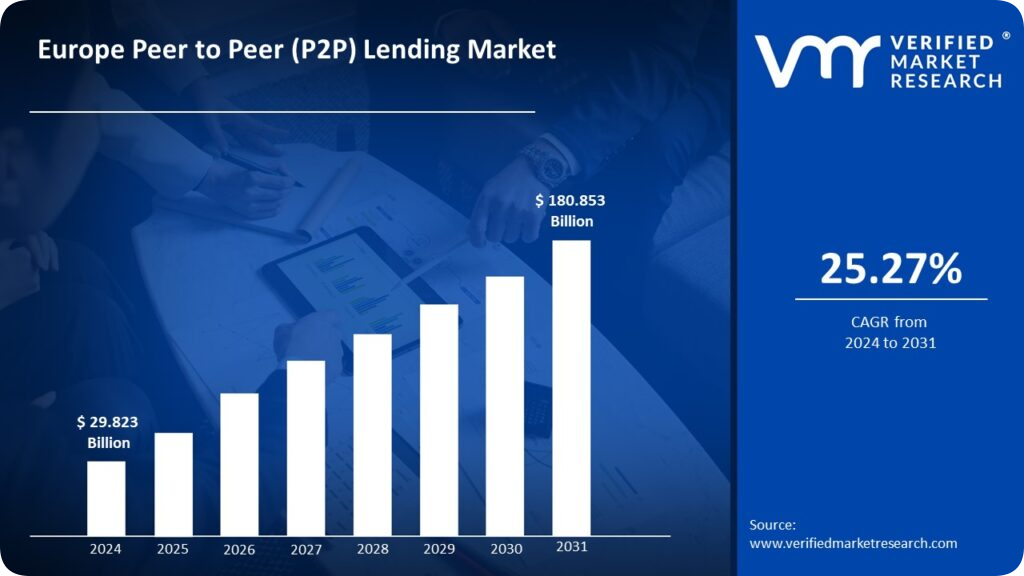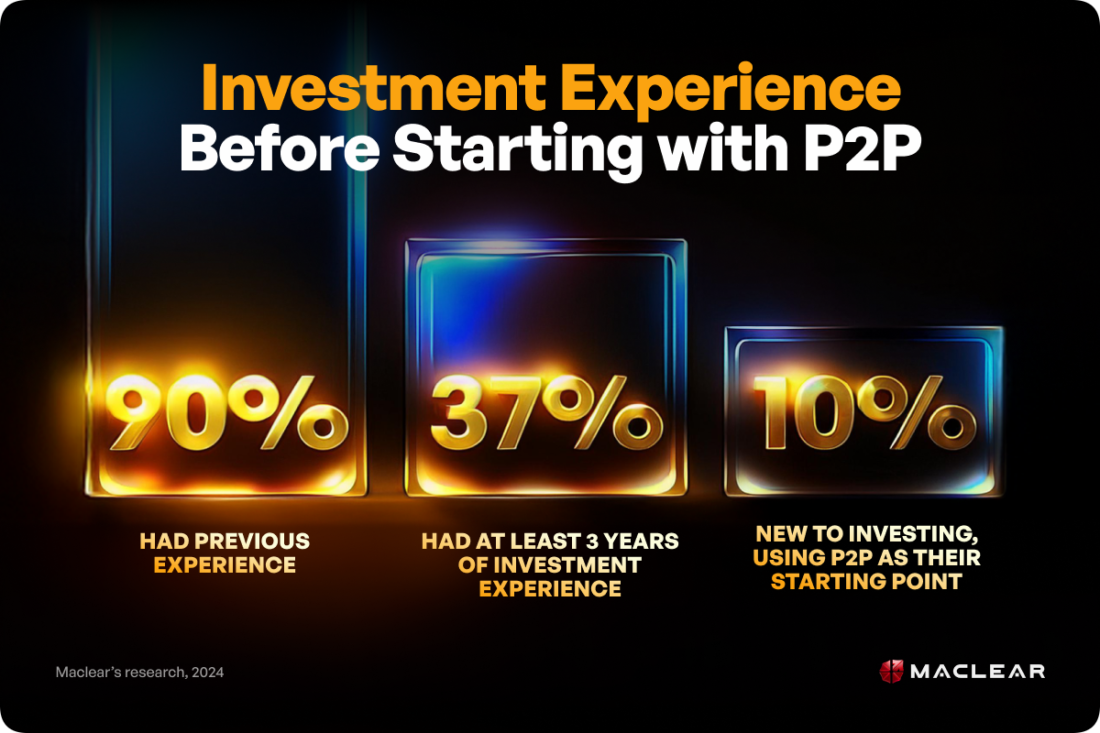Uncovering the P2P investors profile: do you fit in?

Peer-to-peer (P2P) lending is gaining traction as an alternative investment tool in Europe. Over the past 15 years, the market has demonstrated steady growth, with the European P2P lending volume reaching USD 29.823 billion in 2024. Leading contributors include Germany, the United Kingdom, and France, which continue to shape the industry’s expansion.
Experts predict that European P2P lending will grow to USD 180.853 billion by 2031, driven by increasing interest from investors seeking alternative assets and stable passive income streams. Moreover, the EU’s supportive stance on P2P lending, including cross-border lending regulations and investment-friendly policies, is accelerating the sector’s enlargement.

New to P2P lending? Here’s what you should know
If you’re exploring P2P investments, you may be wondering what motivates investors to choose this option. Maclear conducted an in-depth analysis of their investor base to understand key drivers, based on feedback from 520 active investors on the platform.
Top reasons investors choose P2P lending
According to Maclear’s research, the four primary motivations for investing in P2P lending are:
- An alternative to traditional banking products — 32% of respondents.
- Portfolio diversification — 81% of respondents.
- Higher returns compared to traditional tools — 56% of respondents.
- Passive income — 54% of respondents.
The findings show that P2P lending is considered more of a complementary investment tool rather than a complete substitute for traditional investment methods. Diversification plays a key role, as P2P platforms offer loans across various industries, risk levels, geographies, and durations, allowing investors to balance their portfolios.
Additionally, fixed returns and scheduled payments make P2P investments particularly appealing for those looking to generate consistent passive income.
Do you need investment experience to start with P2P?
While P2P lending is accessible and might be appealing to all, the research suggests that most investors enter the space after gaining experience with other investment instruments. The majority of P2P investors are seasoned investors seeking diversification and risk mitigation, though beginners are also entering the market.
- 90% of investors had previous experience before joining P2P.
- 37% had at least three years of investment experience.
- 10% were new to investing, using P2P as their starting point.

Interestingly, investors who utilize three or more investment tools often choose P2P lending as a strategy to shift part of their capital from volatile markets into a more predictable, passive income-generating asset.
SME-focused P2P lending
Beyond financial returns, many investors align their P2P investments with personal values and economic impact goals. That’s where SME-focused P2P lending enters the game by offering particularly attractive opportunities:
- Supporting Small and Medium Enterprises (SMEs) — Accounting for nearly 99% of businesses in the EU, SMEs often struggle to obtain bank financing due to stringent requirements, making P2P lending an essential alternative.
- Earning competitive returns — SME loans often yield higher interest rates compared to other types of P2P lending.
- Diversification across various business sectors – Investors can select from a wide range of SME projects across different industries, minimizing risk while maintaining portfolio balance.
- Economic growth promotion — By helping and funding SMEs, investors contribute to job creation and economic development in local and international markets.
The increasing popularity of SME loans highlights a shift in the investment landscape where socially responsible investing comes into play, attracting more and more investors to support businesses and make a difference.
Final thoughts: is P2P lending right for you?
Although statistics show that mature investors are more likely to choose P2P lending as their diversification instrument, Maclear is suitable even for the newbies here. Maclear offers a minimum threshold to start — start investing with as little as €50, allowing you to test the waters with minimal risk. To maintain investor confidence, every project listed on Maclear undergoes a rigorous multi-stage verification process before being added to the platform. Working since 2023, Maclear have zero default or late loans — the payments are made on time and with no hidden fees.
If you’re interested in starting your P2P journey right away, or find out more about European P2P lending, visit the Maclear platform. There’s also a €10 welcome bonus to your account after completing registration.








